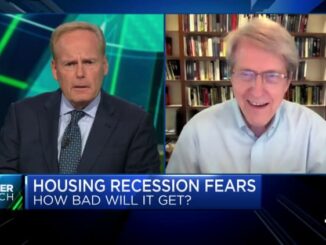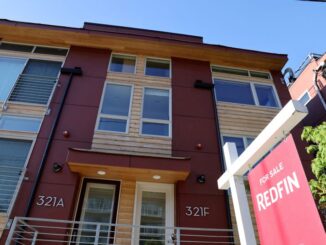
Higher mortgage rates have zapped mortgage demand, as buyers are having second thoughts about purchasing homes.
Mortgage applications for home purchases dropped 6% for the week ending February 24 from the previous week, according to the Mortgage Bankers Association’s seasonally adjusted index. Mortgage demand was also 44% lower than the same week a year ago, and is now sitting at a 28-year low.
“After a brief revival in application activity in January, when mortgage rates dropped down to 6.2%, there has now been three straight weeks of declines in applications, as mortgage rates have jumped 50 basis points over the past month,” said Joel Kan, MBA’s vice president and deputy chief economist.
Data on inflation, employment and economic activity signaled that inflation may not be cooling as quickly as anticipated, putting upward pressure on rates, Kan explained.
The average contract interest rate for 30-year fixed-rate mortgages with conforming loan balances that are $726,200 or less increased to 6.71% from the previous week’s 6.62%. The average contract interest rate for 30-year fixed-rate mortgages with jumbo loan balances that are greater than $726,200 remained at 6.44% during the same period.
At HousingWire‘s Rate Center, the Optimal Blue data showed rates at 6.681% on Tuesday, up from last week’s 6.638%. At Mortgage Daily News, rates were even higher at 6.85%.
Some buyers who recently applied for a mortgage may hold off on purchasing until rates cool off again, Logan Mohtashami said in a recent column.
“I call this rate lock risk, where some buyers don’t qualify or don’t want to continue the purchase until rates fall again. Rates spiking almost 1% in mere weeks is damaging because it can take some previous buyers out of play,” Mohtashami said.
Mortgage loan originators had hoped for a heated spring housing market, as rates were declining in January, but hopes are dimming.
“It’s almost like there was a false start,” Dan Monson, branch manager at Sente Mortgage said.
“Maybe a month ago, somebody turned on the spigot. All of a sudden there were leads, referrals and action. But recently, somebody turned it back off. I don’t know that there’s a rush coming,” Monson said.
Demand to refinance also declined for the week, dropping by 6% week over week, and refi demand was 74% lower compared to the same week last year.
“Refinance applications account for less than a third of all applications and remained more than 70% behind last year’s pace, as a majority of homeowners are already locked into lower rates,” Kan said.
The refinance share of mortgage activity decreased to 31.8% of total applications from 32.5% in the previous week. The USDA share of total volume also declined to 0.5% from 0.6% during the same period.
The adjustable-rate mortgage (ARM) share of activity rose to 8.1% of the total volume. The FHA share of total applications remained unchanged at 12.1%.
However, it’s not all doom and gloom. There are hopes for more activity toward the latter half of the year.
The MBA expects the 30-year fixed-rate mortgage to drop to 6.1% in the second quarter, 5.7% in the third quarter and 5.3% in the fourth quarter.
“The year is starting off slowly, but I think we’re going to finish in a pre-pandemic number,” Monson said. “Last year [production] was front-end loaded [and] this year is going to be back-end loaded.”



